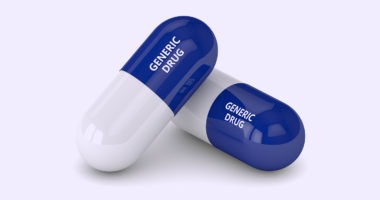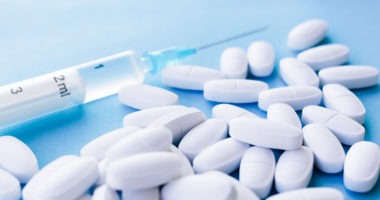Merck & Co. to Acquire Cubist Pharmaceuticals for $9.5 Billion
Merck & Co. has agreed to acquire Cubist Pharmaceuticals, a biopharmaceutical company specializing in antibiotics, particularly for multidrug-resistant bacteria, for $9.5 billion. DCAT Value Chain Insights (VCI) examines the proposed acquisition for Merck’s portfolio and the renewed interest in the antibiotics market.
Merck & Co.’s decision to acquire Cubist Pharmaceuticals, a biopharmaceutical company specializing in antibiotics, boosts Merck’s position in anti-infectives but also reflects renewed interest in the antibiotics market. Spurred by governmental and regulatory initiatives to encourage antibiotic innovation and market need to develop drugs to combat drug-resistant bacteria, the large pharmaceutical companies and specialty players have made recent investments in this area. DCAT Value Chain Insights (VCI) takes an inside look.
 |
| Kenneth C. Frazier Chairman and CEO Merck & Co. Inc. |
Examining the deal
Under the proposed deal, Merck & Co. has agreed to acquire Cubist Pharmaceuticals for $9.5 billion, which includes an equity valuation of $8.4 billion (based on an offer of $102 per share in cash) and the assumption of $1.1 billion in net debt (based on projected cash balances) and other considerations. The boards of directors of both companies have approved the transaction. Cubist is focused on the discovery, development, and supply of antibiotics to treat serious and potentially life-threatening infections caused by a broad range of increasingly drug-resistant bacteria, and the deal is intended to strengthen Merck’s position in anti-infectives, specifically its hospital acute-care business in a variety of therapeutic areas, including Gram-positive and Gram-negative multidrug-resistant infections. Cubist’s lead antibiotic is Cubicin (daptomycin), a once-a-day therapy for both Staphylococcus Aureus bacteremia and complicated skin and skin structure infections. Cubist’s late-stage pipeline of anti-infective medicines include Zerbaxa (ceftolozane/tazobactam), which under review from US and European Union (EU) regulatory authorities.
“Cubist is a global leader in antibiotics and has built a strong portfolio of both marketed and late-stage pipeline medicines,” said Kenneth C. Frazier, chairman and chief executive officer, Merck, in a company statement. “Combining this expertise with Merck’s strong capabilities and global reach will enable us to create a stronger position in hospital acute care while addressing critical areas of unmet medical need, such as antibiotic resistance.” The company estimates that hospitals currently represent 25% of overall healthcare spend and says that increasing its hospital acute-care presence is of strategic importance because of the positive regulatory and reimbursement trends in the hospital setting and the increasingly important role that hospitals are expected to provide in healthcare overall.
For the first three quarters of 2014 compared to 2013, Merck’s hospital acute-care portfolio grew by more than 10%, excluding the impact of foreign exchange. Key products in Merck’s hospital acute-care portfolio include several antibiotics and antifungals as well as Bridion (sugammadex), which is marketed outside the United States and is currently under regulatory review in the US. In addition, Merck has several candidates in its hospital acute-care pipeline, including actoxumab/bezlotoxumab (MK-3415A), an investigational combination of therapeutic antibodies targeting two Clostridium difficile pathogenic toxins (A and B), which is being evaluated in clinical trials for the prevention of recurrence of C.difficile infection; and relebactam (MK-7655), an investigational class A and C beta-lactamase inhibitor being evaluated in clinical trials for the treatment of severe bacterial infections.
Merck expects the acquisition to add more than $1 billion of revenue to its 2015 base. Under the terms of the agreement, Merck, through a subsidiary, will initiate a tender offer to acquire all outstanding shares of Cubist Pharmaceuticals. The closing of the tender offer will be subject to certain conditions, including the tender of shares representing at least a majority of the total number of Cubist’s outstanding shares (assuming the exercise of all options), the expiration of the waiting period under the Hart-Scott-Rodino Antitrust Improvements Act, and other customary conditions. Upon the completion of the tender offer, Merck will acquire all remaining shares through a second-step merger without the need for a stockholder vote. The companies expect the transaction to close in the first quarter of 2015.
Earlier this year, Cubist Pharmaceuticals expanded its operations by opening up international headquarters in Zurich, Switzerland to complement the company’s corporate headquarters in Lexington, Massachusetts. The company also announced plans to invest $400 million on antibiotic R&D and focus its late-stage pipeline on addressing serious and potentially life-threatening healthcare-acquired bacterial infections. In 2013, Cubist generated full-year total net revenues of $1.1 billion and increased its global employee base to approximately 960, up 35% from 2012. Approximately three out of every four employees at Cubist are focused on the research, development, commercialization, and support of antibiotics.
Subsequent to announcing its proposed acquisition of Cubist, Merck issued a statement regarding recent patent litigation on Cubicin, Cubist’s lead product, which involved a decision of the U.S. District Court for the District of Delaware, which upheld the patent for Cubicin that expires on June 15, 2016 and invalidated four others. the decision is subject to appeal. “The company continues to believe the acquisition of Cubist will create strong fundamental value for Merck’s shareholders,” said Merck in a statement. “The combined strength of both companies will provide both incremental and long-term value, and Merck expects the transaction to add more than $1 billion of revenue to its 2015 base, with strong growth potential thereafter.”
New life for the antibiotics market
Merck & Co.’s plan to acquire Cubist reflects growing interest in the antibiotics markets as US and EU governments create regulatory incentives to encourage antibiotic innovation and the commercialization of new antibiotics. For example, in September 2014, President Barack Obama issued an Executive Order for developing a national strategy and action plan to combat antibiotic-resistant bacteria.The plan builds on the Generating Antibiotic Incentives Now (GAIN) Act, part of the Food and Drug Administration Safety and Innovation Act of 2012, which established a new Qualified Infectious Disease Product (QIDP) designation for antibiotics that treat serious or life-threatening infections, fast tracking their development and regulatory review and allowing manufacturers to apply for extended market exclusivity upon approval.
Under the US plan, among several items, the government established a Task Force for Combating Antibiotic-Resistant Bacteria, co-chaired by the Secretaries of Defense, Agriculture, and Health and Human Services (HHS), which is charged with the responsibility of developing a national strategy and action plan, including ways to facilitate development of new drugs and diagnostics. The task force will also address recommendations made in a recent report by the President’s Council of Advisors on Science and Technology on Combating Antibiotic Resistance. The task force is required to regularly report to the President on progress made in implementing the national strategy, action plan, and related national targets. By February 15, 2015, the task force is required to submit a five-year national action plan to the President that outlines specific actions to be taken to implement the strategy. As one part of the action plan, the task force is required to outline steps that agencies can take to encourage the development of new and next-generation antibacterial drugs, diagnostics, vaccines, and novel therapeutics for both the public and agricultural sectors, including steps to develop the infrastructure for clinical trials and options for attracting greater private investment.
Prior to the issuance of the Executive Order, the US Food and Drug Administration (FDA) has been active in addressing the problem of antibiotic-resistant bacteria. In September 2012, FDA’s Center for Drug Evaluation and Research formed its own Antibacterial Drug Development Task Force, a group of expert scientists and clinicians from within the FDA, to consider opportunities to promote antibacterial drug development. The FDA task force is working with experts from academia, regulated industry, professional societies, patient-advocacy groups, and government agencies. The FDA also has contributed to the efforts of the Biomarkers Consortium of the Foundation for the National Institutes of Health to develop new endpoints for studying antibacterial drugs and is working with the Clinical Trials Transformation Initiative (CTTI), which is focused on advancing clinical trials for more efficient drug development. The FDA is also working with the Brookings Institution’s Engelberg Center for Health Care Reform, and in August, 2012 began the first Brookings Council for Antibacterial Drug Development (BCADD) meeting, which offered further discussion and input. The BCADD meetings are slated to occur approximately twice a year. In addition, the agency also held a public meeting in February 2013 to generate input for creating an alternative approval pathway for certain drugs, such as antibacterial drugs, which address unmet medical need. It also has issued several guidance documents for industry, in draft and final form,which describe FDA’s scientific thinking with regard to developing new antibacterial drugs.
To create incentives for new antibiotics, the GAIN Act provided regulatory incentives for new drug development in antibiotics. Under GAIN, certain antibacterial or antifungal drugs intended to treat serious or life-threatening infections can be designated by the FDA as “Qualified Infectious Disease Products” (QIDPs). As part of its QIDP designation, a drug receives priority review and can also receive fast-track designation at the sponsor’s request. At the time of approval, a product with QIDP designation may be eligible for an additional five years of marketing exclusivity, exclusive marketing rights without competing with a generic drug product.
These incentives are a way to encourage investment in antibiotic innovation. From an economic standpoint, antibiotics are often viewed as less potentially profitable for a company because they are generally taken only for a short period of time and often only for one course of treatment by any given patient. These economic realities can make it challenging for a company to justify large expenditures for the development of drugs in this area. The market numbers bear this out with nearly flat growth for antibiotics. The global market for systemic antibiotics is expected to grow to $41.2 billion by 2018 with a compound annual growth rate (CAGR) of 0.8% between 2013 through 2018, according to a recent analysis by BCC Research, a Norwalk, Connecticut-based market research firm. Asian countries account for the fastest-growing market with a five-year CAGR of 1.2% due to the increasing aging population, improved gross domestic product rates, and increasing awareness about healthcare.
Recent drug approvals and the pipeline for antibiotics
In the US, the QIDP designation has prompted investment by the large pharmaceutical companies and smaller companies. As of September 2014, the FDA had granted 52 QIDP designations to 35 different unique molecules. The first three QIDP-designated antibacterial drugs were approved by the FDA in the past few months: Durata Therapeutics’ Dalvance (dalbavancin) in May 2014; Cubist Pharmaceuticals’ Sivextro (tedizolid phosphate) in June 2014; and The Medicines Company’s Orbactiv (oritavancin) in August 2014. Dalvance is intended to treat acute bacterial skin and skin structure infections (ABSSSI) caused by certain susceptible bacteria such as Staphylococcus aureus (including methicillin-susceptible and methicillin-resistant strains) and Streptococcus pyogenes. Actavis recently acquired Durata Therapeutics. Sivextro and Orbactiv are also approved to treat patients with ABSSSI caused by certain susceptible bacteria, including Staphylococcus aureus (including methicillin-resistant strains and methicillin-susceptible strains), various Streptococcus species, and Enterococcus faecalis.
Aradigm Corporation, a emerging specialty pharmaceutical company based in Hayward, California, received QIDP designation in May 2014 for its inhaled antibiotic candidate, Pulmaquin, for treatment of non-cystic fibrosis bronchiectasis (non-CF BE) patients with chronic lung infections with Pseudomonas aeruginosa. Pulmaquin is a dual-release formulation that is a mixture of liposome encapsulated and unencapsulated ciprofloxacin, a widely used antibiotic. The drug is in Phase III development. In 2013, Aradigm granted an exclusive, worldwide license for the company’s inhaled liposomal ciprofloxacin product candidates for the indication of non-CF BE and other indications to Grifols S.A. Melinta Therapeutics, a privately held company headquartered in New Haven, Connecticut, has a late-stage investigational antibiotic, delafloxacin, which is currently in Phase III development for ABSSSI and which has received QIDP status. A key initiative at Melinta is to develop a new class of antibiotics designed to overcome the drug-resistant ESKAPE pathogens known to cause serious hospital infections. Another company Actelion Ltd, a Swiss biopharmaceutical company, received QIDP designation and fast-track status from the FDA for cadazolid for the treatment of C. difficile-associated diarrhea. Also, Wockhardt received QIDP designation in August 2014 for two investigational drugs (WCK 771 and WCK 2349) that are designed to act against MRSA (Methicillin-resistant S. Aureus) , which causes a range of diseases from skin infection to severe respiratory infections, including hospital-acquired pneumonia (HAP). Both of these drugs are effective against MRSA and have shown potential in treatment of HAP.
Among the larger pharmaceutical company’s Merck & Co.’s relebactam, the company’s investigational beta-lactamase inhibitor, received FDA’s QIDP designation with designated fast track status. The QIDP and fast-track designations apply to the intravenous use of relebactam for the treatment of complicated urinary tract infections, complicated intra-abdominal infections, and hospital-acquired bacterial pneumonia/ventilator-associated bacterial pneumonia. Beta-lactamases are a family of enzymes produced by some bacteria that can cause resistance to several widely used beta-lactam antibiotics, including penicillins, cephalosporins, and carbapenems. By combining a beta-lactamase inhibitor with a beta-lactam antibiotic, it may be possible to overcome the resistance and extend the spectrum of activity of the antibiotic to fight infections. Relebactam is an investigational, class A and C, beta-lactamase inhibitor that is being evaluated in combination with imipenem/cilastatin in ongoing Phase II clinical trials. Merck plans to initiate Phase III studies with relebactam in combination with imipenem/cilastatin in 2015.
In June 2014, AstraZeneca received fast-track status and QIDP designation for its investigational oral antibiotic, AZD0914, which is in Phase II clinical trials to investigate efficacy in treating uncomplicated gonorrhoea. AstraZeneca’s small-molecule assets in antibiotics include Merrem (meropenem) and Zinforo (ceftaroline fosamil) as well as a preclinical and clinical portfolio of investigational agents, including CAZ AVI (combination of ceftazidime and avibactam), CXL (ceftaroline plus avibactam), ATM AVI (aztreonam plus avibactam), and AZD0914.
Earlier this month, Actavis reported that an FDA advisory committee had recommended for approval ceftazidime-avibactam, an investigational antibiotic being developed to treat serious Gram-negative bacterial infections. It consists of ceftazidime, a third-generation, antipseudomonal cephalosporin, which is an established treatment for serious Gram-negative bacterial infections, and avibactam, a next-generation, non-β-lactam β-lactamase inhibitor. As agreed with the FDA, ceftazidime-avibactam was submitted as a 505(b)(2) new drug application for complicated urinary tract Infections (cUTI) and complicated intra-abdominal Infections (cIAI), including those caused by multi-drug resistant Gram-negative bacterial pathogens. The FDA action date for ceftazidime-avibactam under the Prescription Drug User Fee Act (PDUFA) is expected during the first quarter of 2015. On August 19, 2014, Actavis announced positive topline results from Phase III studies evaluating the potential for ceftazidime-avibactam as a treatment for adult patients with cIAI. The FDA granted ceftazidime-avibactam QIDP status for its indications of cIAI, cUTI, and hospital-acquired bacterial pneumonia/ventilator-associated bacterial pneumonia in March 2013.
In July 2014, Astellas’ isavuconazole recevied QIDP designation for the treatment of invasive candidiasis. Previously, isavuconazole received QIDP designation for invasive aspergillosis and invasive mucormycosis (also known as zygomycosis). Isavuconazole is an investigational once-daily intravenous and oral broad-spectrum antifungal being developed for the treatment of severe invasive and fungal infections. Isavuconazole is the active moiety of the prodrug isavuconazonium sulfate. Astellas is co-developing isavuconazole with Basilea Pharmaceutica International Ltd., which is headquartered in Basel, Switzerland, and which is focused on developing antibiotics, antifungals, and oncology drugs.
In January 2014, Sanofi announced a partnership with Fraunhofer-Gesellschaft, a leading research institute for the creation of a natural product center of excellence to accelerate the discovery and development of new therapies to treat infectious diseases. Under the agreement, Sanofi and Fraunhofer IME (Institute for Molecular Biology and Applied Ecology) will collaborate to identify and optimize novel naturally occurring chemical or biological compounds, mainly in the field of infectious diseases. The approach may also be extended to other indications such as diabetes, pain, and rare diseases, where natural products-derived substances have proven to play an important role in treatment and disease prevention. Sanofi will share its strain collection, consisting of over a hundred thousand different microorganisms, with Fraunhofer, and in addition offer its expertise in anti-infective research.
In November 2013, Roche and Polyphor, a Swiss company specializing in macrocycle drug development, formed an exclusive worldwide license agreement to develop and commercialize Polyphor’s investigational macrocycle antibiotic, POL7080, for patients with bacterial infections caused by Pseudomonas aeruginosa, a drug-resistant microbe. The deal included an upfront payment of CHF 35 million ($37 million) to Polyphor as well as payments upon reaching certain development, regulatory, and commercial milestones, potentially up to CHF 465 million ($495 million). In addition, Polyphor is entitled to receive tiered double-digit royalties on product sales. Polyphor will retain the option to co-promote an inhaled formulation of POL7080 in Europe.
In February 2014, more than 30 European universities, research institutes, and companies, led by GlaxoSmithKline (GSK) and Uppsala University joined forces in a six-year program supported by Europe’s Innovative Medicines Initiative (IMI) to develop novel antibiotics against Gram-negative pathogens in a project called ENABLE (European Gram-Negative Antibacterial Engine), including open calls for candidates outside the consortium. The IMI, a research partnership between the European Commission and major pharmaceutical companies (through EFPIA, the European Federation of Pharmaceutical Industries and Associations) launched New Drugs for Bad Bugs (ND4BB), a series of projects to target the bottlenecks in the development and effective use of novel antibiotics. The ENABLE project, the third within the ND4BB series, spans 13 countries and brings together 32 partners with the goal to establish an anti-bacterial drug discovery platform for the progression of research programs through discovery and Phase I clinical trials. A preliminary portfolio of programs will be expanded through open calls to create a full development pipeline, with the ultimate goal to complete Phase I clinical trials of at least one novel anti-bacterial for Gram-negative infections by 2019. GSK, AstraZeneca, Sanofi, Basilea Pharmaceutica, and Janssen are among the companies in the ND4BB initiative. ND4BB is part of the “Action Plan Against the Rising Threats from Antimicrobial Resistance” adopted by the European Commission in response to the European Parliament’s resolution to establish an European Union-wide plan to combat antimicrobial resistance.
In October 2014, EFPIA announced a major new European initiative to tackle the growing global threat of antibiotic resistance with the launch of DRIVE-AB (Driving Reinvestment in R&D and Responsible Antibiotic Use). DRIVE-AB is a EUR 9.4 million ($11.6 million) public-private consortium, funded by the EU’s IMI, which aims to define a standard for the responsible use of the dwindling reserve of effective antibiotics and to develop, test, and recommend new economic models for pharmaceutical industry investment in producing new ones. Cubist Pharmaceuticals, Astellas, AstraZeneca, Pfizer, Roche, and GSK are among the industry partners in the collaboration.




